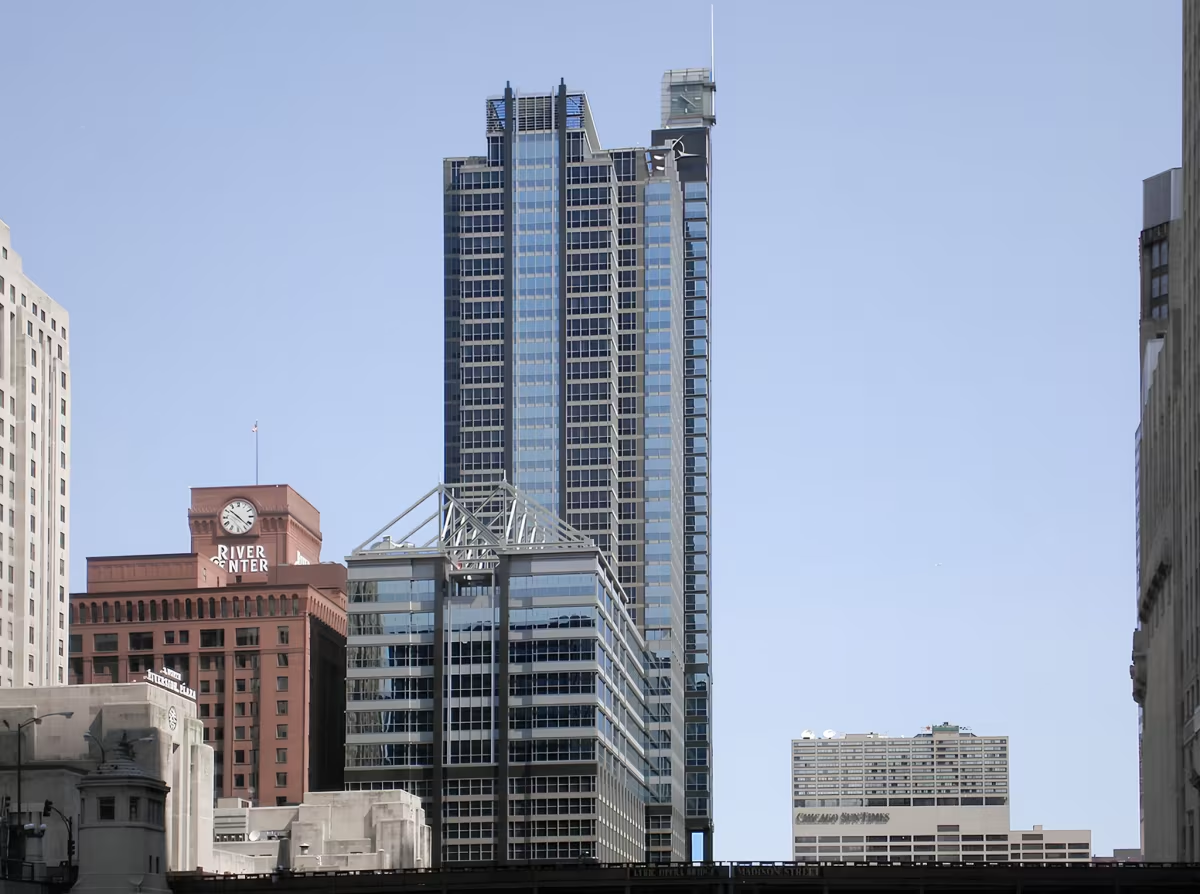Boeing International Headquarters vs North Harbor Tower


Comparing the Boeing International Headquarters and the North Harbor Tower is interesting because they both stand in Chicago, IL, and were completed within 2 years of each other, but they were designed by different architects.
This offers a unique glimpse at how rival designers approached projects in the same city during the same era.
Height & Size
These two towers present an interesting contrast in their proportions. The Boeing International Headquarters rises higher at 561ft (171m), while the North Harbor Tower reaches 554ft (169m). However, the North Harbor Tower accommodates more floors with 55 levels above ground, compared to 36 floors in the Boeing International Headquarters.
This suggests different approaches to interior space design. The Boeing International Headquarters has an average floor-to-floor height of approximately 4.8m, while the North Harbor Tower has more compact floors averaging around 3.1m each. The taller building's more generous floor heights might indicate grander interior spaces, higher ceilings, or different programmatic requirements.
These different proportions likely reflect the specific needs each building was designed to serve, whether driven by zoning regulations, client requirements, or the intended use of the spaces within. The contrast shows how architects can achieve different spatial experiences even when working with similar overall building scales.
Architectural Style
Both the Boeing International Headquarters and the North Harbor Tower were designed in line with the aesthetic conventions of the Postmodernism style.
At the time, this style was at the height of its popularity. So both Perkins and Will and Fujikawa Johnson & Associates followed what was in many ways expected of them, producing designs that fit comfortably within contemporary architectural norms, rather than breaking with convention.
Uses
The Boeing International Headquarters is primarily commercial, while the North Harbor Tower is primarily residential.
The North Harbor Tower offers 600 residential units.
Both towers provide significant parking capacity, with Boeing International Headquarters offering 435 spaces and the North Harbor Tower offering 404.
Structure & Facade
Both towers share the same structural solution, a Frame system.
A frame structure uses a grid of columns and beams to carry the building's loads. This frees the walls from structural duties, allowing for flexible floor plans and larger windows.
However, when it comes to the facade, both buildings use different approaches. The Boeing International Headquarters uses a Curtain Wall facade, while the North Harbor Tower uses a Window Wall facade.
A Curtain Wall facade like the one seen in the Boeing International Headquarters uses a lightweight glass curtain wall hung from the structure, while a window-wall facade like the one seen in the North Harbor Tower uses panels fitted between floor slabs, leaving slab edges visible.
| Boeing International Headquarters | North Harbor Tower | |
|---|---|---|
| Perkins and Will | Architect | Fujikawa Johnson & Associates |
| 1990 | Year Completed | 1988 |
| Postmodernism | Architectural Style | Postmodernism |
| Commercial | Current Use | Residential |
| 36 | Floors Above Ground | 55 |
| 171 m | Height (m) | 169 m |
| Frame | Structure Type | Frame |
| Steel | Vertical Structure Material | Concrete |
| Steel And Concrete | Horizontal Structure Material | Concrete |
| Yes | Facade Structural? | Yes |
| Glass, Steel, Aluminum | Main Facade Material | Glass, Concrete |
| Schal Associates, Inc. | Main Contractor | Metropolitan Structues Inc. |
| Perkins & Will | Structural Engineer | Alfred Benesch & Company |
| IL | State | IL |
| Chicago | City | Chicago |
| 100 North Riverside Plaza | Address | 175 North Harbor Drive |